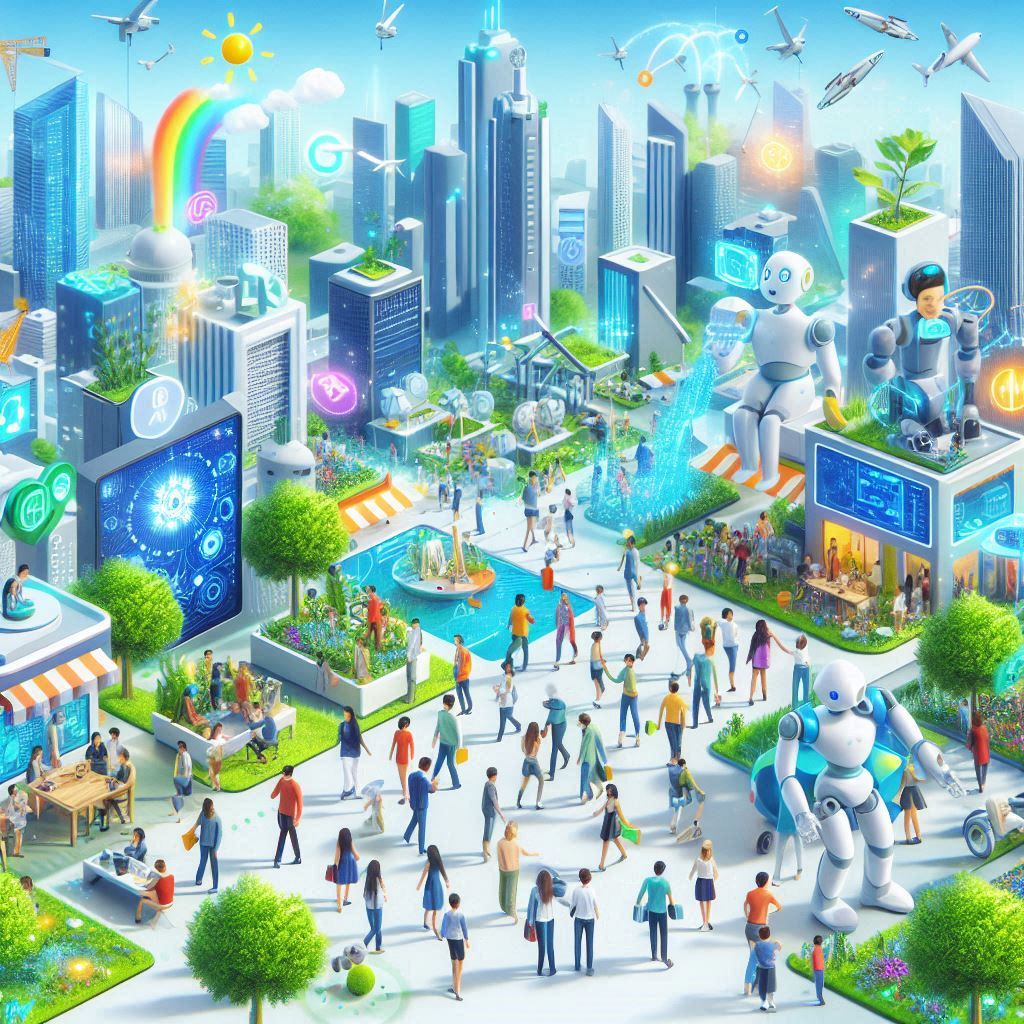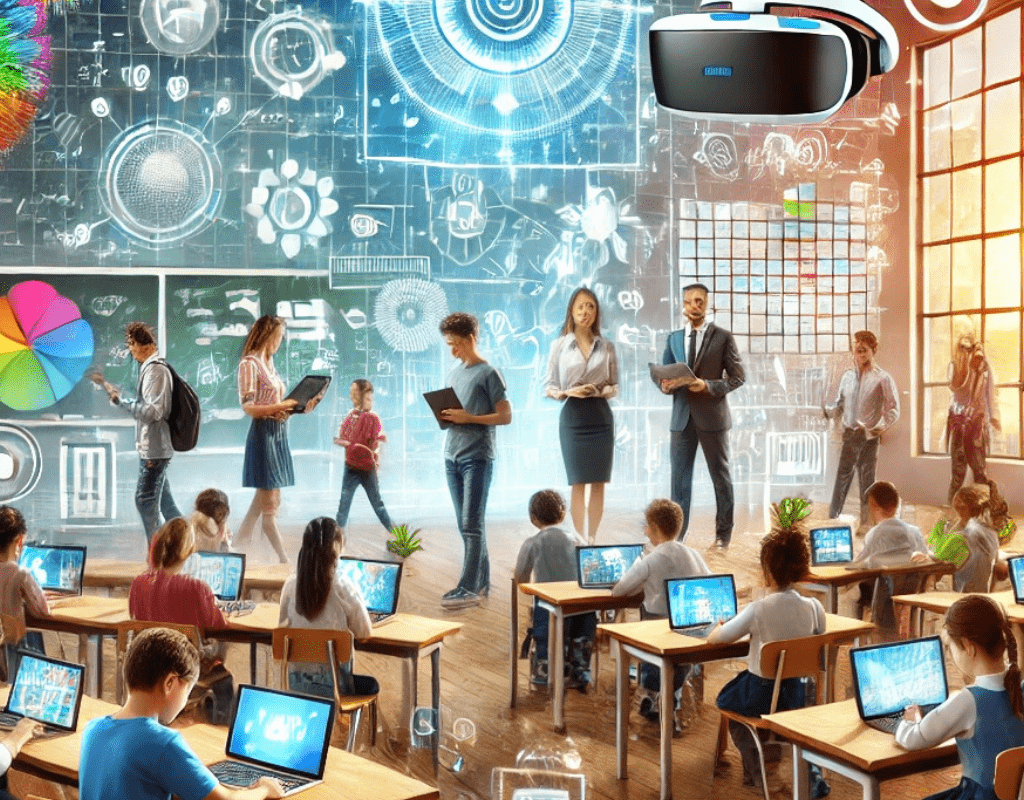In recent years, Artificial Intelligence (AI) and Machine Learning (ML) have moved from the realm of science fiction into our everyday lives, revolutionizing industries and reshaping how we interact with technology. This comprehensive guide explores the current state of AI and ML, their applications, challenges, and what the future might hold.
Understanding the Basics
Before starting to discuss AI and Machine Learning let us see what is Artificial Intelligence and Machine Learning separately.
What is Artificial Intelligence?
Artificial Intelligence is the simulation of human intelligence in machines programmed to think and learn like humans. AI systems can process information, recognize patterns, make decisions, and learn from experience. Unlike traditional programming, where every rule must be explicitly defined, AI systems can adapt and improve their performance over time.
Machine Learning: The Engine Behind AI
Machine Learning is a subset of AI focusing on developing systems that can learn and improve from experience without being explicitly programmed. ML algorithms analyze data, identify patterns, and make predictions or decisions with minimal human intervention. The three main types of machine learning are:
The core of machine learning lies in its three primary learning paradigms: supervised learning, unsupervised learning, and reinforcement learning. Each approach offers distinct advantages and caters to different problems and applications.
Supervised learning algorithms are trained on labeled data, where the input data is paired with corresponding output or target variables. These algorithms learn to map the input data to the known outputs, allowing them to make predictions or classifications on new, unseen data. Spam detection and price forecasting are prime examples of supervised learning tasks, where the algorithms leverage the labeled training data to identify patterns and make accurate predictions.

In contrast, unsupervised learning algorithms operate on unlabeled data and are tasked with discovering inherent patterns and structures within the information. These algorithms benefit clustering and association tasks, such as customer segmentation and recommendation systems. By identifying hidden relationships and groupings within the data, unsupervised learning models can uncover valuable insights that may not be immediately apparent.
The third type of machine learning, reinforcement learning, takes a fundamentally different approach. Instead of learning from labeled or unlabelled data, these algorithms learn by interacting with an environment and receiving feedback as rewards or penalties. The algorithms then use this feedback to adjust their actions and behaviors, ultimately learning the optimal strategies for achieving their goals. Reinforcement learning has dramatically succeeded in game-playing and robotics, where the algorithms can learn complex decision-making skills through trial and error.
These three machine learning paradigms form the foundation for a wide range of intelligent systems and applications, each with unique strengths and applications. Understanding the differences and appropriate use cases for supervised, unsupervised, and reinforcement learning is crucial for effectively leveraging the power of machine learning in various domains.
Current Applications and Impact
Artificial Intelligence (AI) and Machine Learning (ML) are experiencing unprecedented growth, transforming industries and reshaping how we live and work.
These technologies analyze data to generate predictions, recommendations, and new content, powering digital assistants, recommendation algorithms, and generative AI tools like ChatGPT.
AI and ML applications are widespread, with 72% of organizations having adopted AI in some capacity. Current applications span various sectors, including creating personalized customer experiences, optimizing supply chain management, detecting fraud in financial services, and enhancing cybersecurity.
Moreover, AI and ML contribute to advancements in healthcare through early disease detection and personalized medicine, and are being utilized for image recognition, sentiment analysis, algorithmic trading, and the development of advanced vehicles and intelligent transport systems.
AI and Machine Learning: The global AI market is projected to reach $1.81 trillion by 2025, highlighting the significant impact and opportunities presented by these technologies
Business and Enterprise
Artificial Intelligence (AI) and Machine Learning (ML) are redefining business operations across diverse industries. One primary area where these transformative technologies are significantly impacting is customer service.
AI-powered chatbots and virtual assistants have revolutionized how businesses interact with customers. These intelligent systems can provide personalized, real-time support, answer queries, offer recommendations, and even predict customer behavior. AI-driven customer service solutions have dramatically enhanced the overall customer experience by automating mundane tasks and providing efficient, round-the-clock assistance.
The financial services sector has also embraced the power of AI and ML. Fraud detection has become more sophisticated, with algorithms capable of identifying suspicious patterns and anomalies in financial transactions. Risk assessment has also been transformed, with AI-powered models analyzing vast amounts of data to make more accurate predictions and inform critical business decisions. Furthermore, algorithmic trading and credit scoring have seen significant advancements, leveraging AI’s ability to identify market trends and make data-driven decisions.
AI and Machine Learning are driving operational efficiency and quality control in the manufacturing industry. Predictive maintenance models can forecast equipment failures, allowing for proactive maintenance and reducing costly downtime. AI-powered quality control systems can identify defects and deficiencies with greater precision, ensuring high-quality products. Additionally, AI is optimizing supply chain operations, streamlining logistics, and improving inventory management.
Across these diverse industries, integrating AI and ML is transforming business processes, enhancing customer experiences, and driving strategic decision-making. As these technologies evolve and become more widely adopted, their influence on the business landscape will only grow, reshaping how organizations operate and compete in the digital age.
Healthcare
The healthcare sector has experienced a remarkable transformation by integrating Artificial Intelligence (AI) and Machine Learning (ML) technologies. These cutting-edge advancements have ushered in a new era of medical innovation, improving patient outcomes and streamlining healthcare operations.
One of the most significant impacts of AI and Machine Learning in healthcare is the ability to enhance disease diagnosis and prediction. By leveraging advanced algorithms and data analysis, healthcare providers can identify potential health issues at earlier stages, enabling more timely and effective interventions. This improves patient prognosis and reduces the burden on the healthcare system.
Moreover, AI/ML has revolutionized the drug discovery and development process. These technologies can analyze vast amounts of data, identify promising drug candidates, and accelerate the testing and approval stages, ultimately bringing life-saving treatments to patients faster. This could improve global health outcomes and dramatically address pressing medical challenges.
AI/ML has also transformed the analysis of medical imaging, such as X-rays, MRI scans, and CT scans. These intelligent systems can detect subtle patterns and anomalies with unprecedented accuracy, assisting healthcare professionals in making more informed diagnoses and treatment decisions. This enhanced medical imaging analysis can save lives by improving the early detection of various diseases.
Beyond diagnosis and treatment, AI/ML is also optimizing patient care and healthcare resource management. Intelligent algorithms can predict patient needs, optimize staffing and resource allocation, and personalize treatment plans, leading to improved healthcare outcomes and more efficient utilization of medical resources.
The future of healthcare is undoubtedly intertwined with the continued advancements in AI and ML. As these technologies become more deeply integrated into the healthcare ecosystem, we expect to see even more remarkable breakthroughs, from personalized medicine to advanced telemedicine solutions, transforming how we approach and deliver healthcare services.
Transportation and Automotive
Artificial Intelligence (AI) is revolutionizing the transportation industry, shaping the future of mobility, and moving people and goods from one place to another.
One of the most prominent applications of AI in transportation is the development of self-driving vehicles. Through a combination of advanced sensors, machine learning algorithms, and complex decision-making systems, autonomous vehicles are becoming a reality. These self-driving cars can navigate roads, detect and respond to their surroundings, and safely transport passengers without human intervention. As the technology continues to evolve, self-driving vehicles promise to reduce accidents, improve traffic flow, and provide mobility solutions for underserved communities.
Alongside self-driving vehicles, AI-powered traffic management systems are optimizing traffic flow on our roads and highways. By analyzing real-time data from various sources, such as traffic cameras, sensors, and GPS, these intelligent systems can detect congestion, identify bottlenecks, and dynamically adjust traffic signals and signage to improve overall traffic flow. This optimization reduces travel times and contributes to more efficient fuel consumption and lower emissions, benefiting both commuters and the environment.
Route optimization is another area where AI is making a significant impact. By leveraging machine learning algorithms, transportation providers can analyze vast amounts of data, including historical traffic patterns, weather conditions, and user preferences, to determine the most efficient routes for both passenger and freight transport. This optimization can lead to cost savings, reduced emissions, and improved customer satisfaction.
AI’s influence extends beyond route planning and traffic management; it also transforms transportation maintenance and safety. Predictive AI-powered models can anticipate equipment failures, enabling proactive repairs and reducing costly downtime. Furthermore, AI-driven safety systems, such as collision avoidance and pedestrian detection, are enhancing the overall safety of transportation networks, protecting both passengers and vulnerable road users.
Fleet management has also benefited from the integration of AI technology. Advanced analytics and intelligent algorithms can optimize fleet operations, improve vehicle utilization, and enhance driver safety through real-time monitoring and feedback. This not only drives efficiency but also contributes to more sustainable transportation solutions.
AI’s role will only become more prominent as the transportation industry continues to evolve. From autonomous vehicles to intelligent traffic management and beyond, AI is shaping the future of mobility, making transportation safer, more efficient, and more sustainable for individuals and communities alike.
Conclusion
Artificial Intelligence and Machine Learning are no longer future technologies – they are present-day tools transforming our lives and work. As these technologies continue to evolve, their impact will only grow stronger. Organizations and individuals must stay informed and adaptable to harness the full potential of AI and ML while addressing the challenges they present.
The future of AI and ML promises even more exciting developments, from more sophisticated autonomous systems to breakthrough healthcare and environmental protection applications. However, success in this field requires a balanced approach that considers technological possibilities and ethical implications.
As we progress, the key to success lies in responsible development and implementation, ensuring that AI and ML enhance human capabilities rather than replace them. By understanding these technologies and their implications, we can work towards a future where AI and ML benefit society while addressing potential risks and challenges.
Whether you are a business leader, developer, or simply interested in technology, staying informed about AI and ML developments is crucial in today’s rapidly evolving digital landscape. The journey of AI and ML is just beginning, and the possibilities are limitless.





